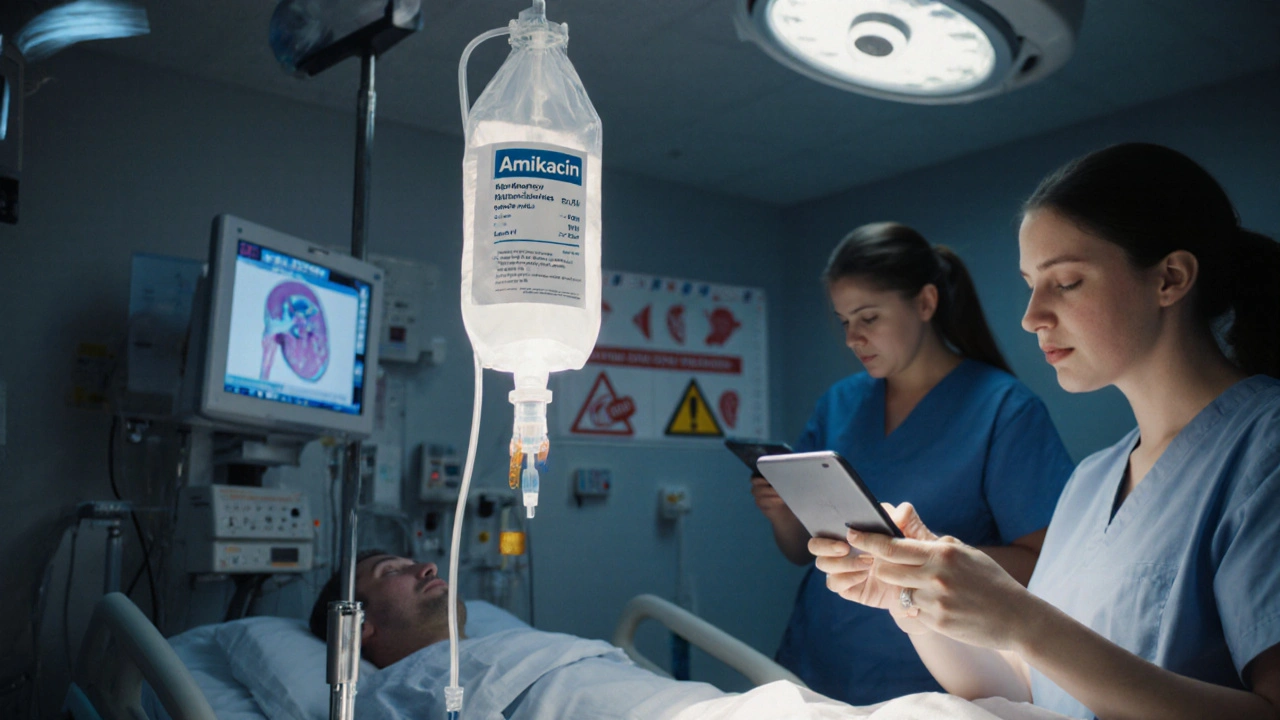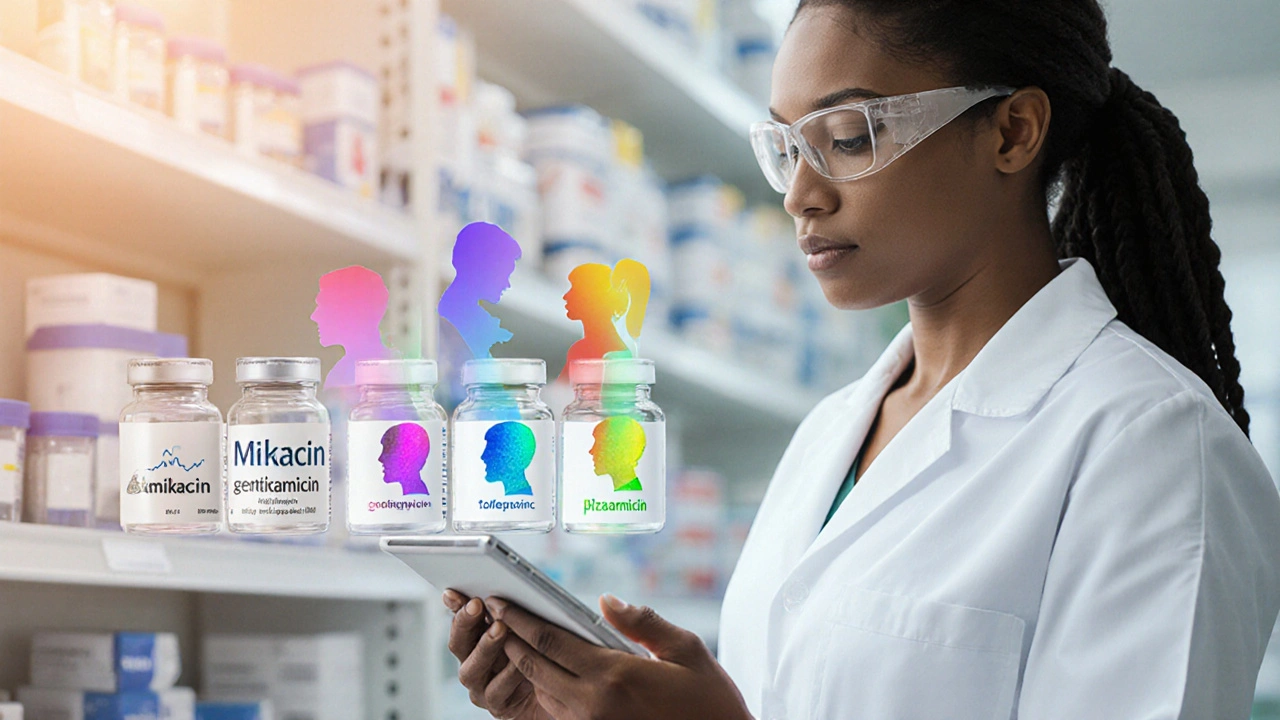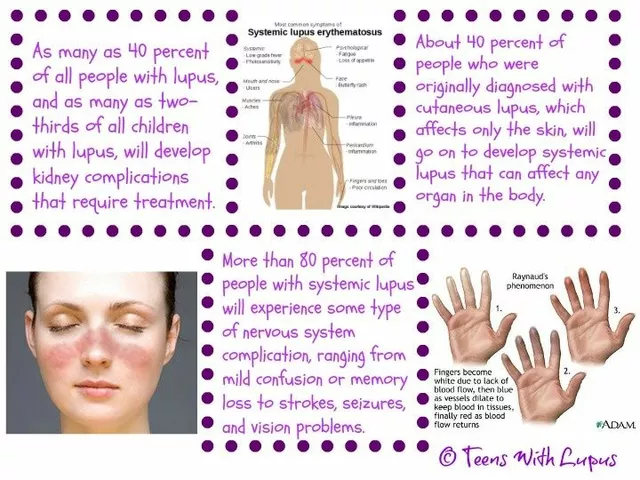Aminoglycoside Antibiotic Selector
This tool helps clinicians select the most appropriate aminoglycoside antibiotic based on key factors including infection type, pathogen resistance profile, patient renal function, and cost considerations.
Key Takeaways
- Mikacin injection (amikacin) offers broad gram‑negative coverage and retains activity against many aminoglycoside‑resistant strains.
- Gentamicin and tobramycin are cheaper but have higher resistance rates in some regions.
- Plazomicin provides next‑generation safety but comes at a premium price.
- Nephrotoxicity and ototoxicity are class effects; dosing and therapeutic drug monitoring (TDM) can mitigate risk.
- Choosing the right agent depends on infection site, pathogen susceptibility, patient renal function, and budget.
What is Mikacin Injection (Amikacin)?
When you see Amikacin is a semi‑synthetic aminoglycoside antibiotic derived from kanamycin, marketed in many countries under the brand name Mikacin for injectable use. It works by binding to the bacterial 30S ribosomal subunit, causing misreading of mRNA and ultimately bacterial cell death. Approved by the FDA in 1979, amikacin is widely used for serious infections caused by aerobic gram‑negative bacilli, including Pseudomonas aeruginosa, Enterobacter spp., and resistant Escherichia coli.
Its strength lies in retaining activity where other aminoglycosides (gentamicin, tobramycin) fail due to enzymatic resistance. However, like all aminoglycosides, it carries risks of kidney and ear damage, so careful dosing and monitoring are essential.
How Do Aminoglycosides Work?
Aminoglycosides share a common mechanism: they infiltrate the bacterial cell wall (the entry is oxygen‑dependent) and attach to the 30S ribosomal subunit. This interferes with the initiation complex and causes incorporation of incorrect amino acids, leading to faulty proteins and bacterial death. Because they require an aerobic environment, they’re most effective against gram‑negative aerobes and some gram‑positive organisms when combined with beta‑lactams.
Resistance mechanisms include enzyme modification (acetyltransferases, phosphotransferases, nucleotidyltransferases) and changes in membrane permeability. Amikacin’s bulky side chain protects it from many of these enzymes, which is why it remains active when gentamicin or tobramycin are rendered ineffective.
When Is Amikacin the Right Choice?
Typical clinical scenarios include:
- Severe hospital‑acquired or ventilator‑associated pneumonia where Pseudomonas is suspected.
- Complicated urinary tract infections caused by multidrug‑resistant Enterobacteriaceae.
- Intra‑abdominal infections when other agents are contraindicated.
- Empiric therapy for febrile neutropenia in oncology patients with high risk of resistant gram‑negatives.
Because amikacin is administered intravenously or intramuscularly, it’s reserved for serious infections that need rapid, high‑level bactericidal activity.
What Are the Main Alternatives?
Below are the most common aminoglycoside or related options you’ll encounter:
- Gentamicin is the oldest widely used aminoglycoside, offering broad gram‑negative coverage but higher rates of enzymatic resistance.
- Tobramycin is favored for cystic fibrosis lung infections due to its excellent activity against Pseudomonas aeruginosa.
- Streptomycin is the first aminoglycoside discovered, now limited to specific tuberculosis regimens and certain gram‑negative infections.
- Plazomicin is a next‑generation aminoglycoside engineered to evade most modifying enzymes, approved for complicated urinary tract infections.
- Non‑aminoglycoside options such as cefepime, piperacillin‑tazobactam, or carbapenems can be used when aminoglycoside toxicity is a concern.

Side‑Effect Profiles at a Glance
All aminoglycosides share two dose‑limiting toxicities:
- Nephrotoxicity: acute tubular necrosis, often reversible if the drug is stopped early.
- Ototoxicity: irreversible hearing loss or vestibular dysfunction, especially with prolonged therapy.
The incidence varies by agent, dosing strategy, and patient factors (age, pre‑existing kidney disease, concurrent loop diuretics). Plazomicin appears to have a slightly lower ototoxicity rate in clinical trials, while gentamicin and tobramycin have the longest safety track record, albeit with higher reported nephrotoxicity in some meta‑analyses.
Cost Considerations
Price can be a decisive factor in many health systems. Approximate US wholesale acquisition costs (2025) for a 500mg vial are:
- Amikacin (Mikacin):$12-$15
- Gentamicin:$3-$5
- Tobramycin:$5-$7
- Streptomycin:$2-$4
- Plazomicin:$300-$350 (single dose)
While amikacin is modestly pricier than generic gentamicin, it’s far cheaper than plazomicin. In resource‑limited settings, gentamicin remains the go‑to choice, but clinicians must balance cost against local resistance patterns.
Comparison Table
| Agent | Spectrum (key targets) | Typical adult dose (IV) | Nephrotoxicity* | Ototoxicity* | Resistance issues | 2025 US price per 500mg vial |
|---|---|---|---|---|---|---|
| Amikacin | Gram‑negative rods, Pseudomonas, resistant Enterobacteriaceae | 15mg/kg once daily | Moderate | Moderate | Low - protected against many aminoglycoside‑modifying enzymes | $12‑$15 |
| Gentamicin | Broad gram‑negative, some gram‑positive (with β‑lactam) | 5‑7mg/kg divided q8h or 5‑7mg/kg once daily | High | High | Common enzymatic resistance, especially in ESBL producers | $3‑$5 |
| Tobramycin | Excellent Pseudomonas coverage, other gram‑negatives | 5‑7mg/kg once daily | High | High | Similar to gentamicin, occasional cross‑resistance | $5‑$7 |
| Streptomycin | Mycobacterium tuberculosis, some gram‑negatives | 15‑20mg/kg once daily | High | Very high (vestibular) | Resistance via rpsL mutation, less relevant for non‑TB | $2‑$4 |
| Plazomicin | Complicated UTI, MDR Enterobacteriaceae, carbapenem‑resistant strains | 15mg/kg once daily | Low‑moderate | Low‑moderate | Designed to evade most modifying enzymes; resistance rare but emerging | $300‑$350 |
*Relative to each other; exact rates depend on patient factors and duration.
Practical Dosing & Therapeutic Drug Monitoring (TDM)
All agents benefit from peak‑trough monitoring, especially in ICU or renal impairment. Here’s a quick cheat‑sheet:
- Obtain a peak level 30minutes after the end of a 30‑minute infusion.
- Get a trough just before the next dose.
- Target peak: 20‑35µg/mL (amikacin) or 8‑10µg/mL (gentamicin/tobramycin) depending on infection severity.
- Target trough: ≤2µg/mL for all agents to minimize toxicity.
- Adjust dose based on creatinine clearance; for CrCl<30mL/min, extend dosing interval or reduce dose by 30‑50%.
Plazomicin’s labeling recommends a fixed 15mg/kg dose without routine TDM, but many clinicians still monitor troughs in high‑risk patients.
Choosing the Right Agent - Decision Guide
Use the following flow to narrow down your choice:
- Is the pathogen confirmed to be susceptible to gentamicin or tobramycin? If yes and cost is a concern, pick the cheaper generic.
- Is there documented aminoglycoside‑modifying enzyme resistance? Opt for amikacin or plazomicin.
- Is the patient at high risk for kidney injury? Consider plazomicin (if budget allows) or limit aminoglycoside duration to ≤5days.
- Is the infection a ventilator‑associated Pseudomonas pneumonia? Tobramycin (inhaled) often adds synergy with β‑lactams; amikacin is an alternative if resistance is suspected.
- Are you treating multidrug‑resistant urinary tract infection? Plazomicin has FDA approval and superior efficacy.
This step‑wise approach helps balance efficacy, safety, and cost.
Key Points for Clinicians
- Always verify renal function before starting any aminoglycoside.
- Prefer once‑daily dosing for amikacin, gentamicin, and tobramycin when possible - it reduces nephrotoxicity without sacrificing efficacy.
- Document susceptibility patterns; local antibiograms often dictate whether amikacin offers a real advantage.
- Educate patients about potential hearing changes; arrange baseline audiograms for prolonged courses.
- Watch the drug budget - a single dose of plazomicin can cost more than a week’s supply of amikacin.

Frequently Asked Questions
Can I give amikacin to patients with mild kidney impairment?
Yes, but you must adjust the dosing interval. For a creatinine clearance of 30-50mL/min, give the usual dose every 48hours instead of daily, and re‑check trough levels before the next dose.
Is once‑daily dosing safer than multiple daily doses?
Studies show that once‑daily (high‑peak, low‑trough) regimens reduce nephrotoxicity while maintaining bactericidal activity. This applies to amikacin, gentamicin, and tobramycin.
When should I choose plazomicin over amikacin?
Plazomicin shines in infections caused by carbapenem‑resistant Enterobacteriaceae or when the local resistance rate to traditional aminoglycosides exceeds 30%. The trade‑off is a substantially higher price.
Do I need to monitor hearing for a short 3‑day course?
For a brief course (<5days) the risk of permanent ototoxicity is low, but any sudden ringing or balance issues should prompt immediate evaluation.
Is gentamicin still useful in the era of newer antibiotics?
Absolutely, especially in low‑resource settings or when the pathogen is known to be susceptible. Its low cost and extensive safety data keep it on many formularies.
Whether you pick amikacin, gentamicin, tobramycin, streptomycin, or the pricey plazomicin, the decision should hinge on the infection’s microbiology, the patient’s kidneys, and the budget you’re working with. By understanding each drug’s strengths and weaknesses, you can tailor therapy that clears the infection without causing unnecessary harm.






Reviews
When you’re weighing amikacin against its peers, it helps to keep the big picture in mind. The drug’s broad gram‑negative coverage makes it a solid fallback for severe infections, especially when resistance is looming. At the same time, its moderate nephrotoxicity reminds us to monitor renal function closely. If your budget can handle the modest price difference, amikacin often offers the best balance of potency and cost.
One cannot simply glance over the ethical dimensions of prescribing a potent aminoglycoside without confronting the broader implications for patient safety and antimicrobial stewardship 😊. The physician’s duty extends beyond merely chasing the cheapest vial; it involves a conscientious appraisal of the drug’s toxicity profile, resistance trends, and the downstream impact on the microbiome. By opting for amikacin only when truly indicated, we honor our commitment to do no harm while still delivering life‑saving therapy. Moreover, the cost‑benefit calculus must factor in the hidden expenses of managing nephrotoxic complications, which often outweigh the modest savings on the drug label. In this light, the selection process becomes a moral exercise, urging clinicians to act responsibly, transparently, and with a steadfast respect for the trust placed in us by our patients. 🌟
The pharmacodynamic superiority of amikacin resides in its robust affinity for the 30S ribosomal subunit, conferring a lower minimum inhibitory concentration against resistant Pseudomonas strains compared to gentamicin. Its structural steric hindrance impedes aminoglycoside‑modifying enzymes, thereby preserving activity where β‑lactamase producers flourish. From a therapeutic drug monitoring perspective, the peak‑trough paradigm aligns with the concentration‑dependent killing kinetics intrinsic to aminoglycosides, optimizing the post‑antibiotic effect. Nonetheless, clinicians must calibrate dosage regimens against creatinine clearance to mitigate the nephrotoxic risk inherent in the class. The cost‑effectiveness equation further tilts in favor of amikacin when factoring in the downstream savings from reduced ICU stays associated with rapid bactericidal action. Consequently, the agent merits preferential placement in empiric algorithms for high‑risk nosocomial infections.
Think of antibiotic choice as a balancing act between the art of healing and the science of microbes-each decision echoes in the patient's future health.
Amikacin offers a potent strike but demands respect for its toxicity.
When renal function dips below the threshold, a dose tweak or alternative may be wiser.
At the end of the day, the goal is to restore health without trading one problem for another.
Look, you can't just grab the cheapest vial and hope for the best-amikacin ain't a joke.
Its price might be higher than gent, but the payoff in real‑world efficacy is worth every cent.
Stop ignoring the data cuz the budget looks tight.
Great breakdown! This tool really helps cut through the confusion when picking an aminoglycoside.
If you have a tight budget, gentamicin stays a solid go‑to.
When resistance spikes, amikacin steps up as the reliable backup.
Keep monitoring those kidney labs and you’ll stay ahead of trouble.
The system pushes cheap aminoglycosides while covering up the true cost of toxicity.
It's refreshing to see a balanced view that weighs both efficacy and safety.
Choosing amikacin makes sense for severe gram‑negative infections, especially when resistance limits other options.
At the same time, we shouldn't ignore the well‑established safety record of gentamicin in settings with low resistance.
Renal monitoring remains the cornerstone regardless of which agent you pick.
Ultimately, an individualized approach based on local antibiograms and patient factors leads to the best outcomes.
When i first started looking at the amikacin versus other agents i was kinda overwhelmed by the sheer amount of data out there. The tables in the article list spectrum, dosing, and toxicity side by side which is super helpful for clinicans who dont have time to dig through endless papers. One thing that jumps out is how amikacin retains activity against many enzymes that knock out gentamicin-this is a big deal in hospitals where ESBL producers run rampant. On the flip side the price tag is not negligible, especially when you compare a $14 vial to a $4 generic. But you have to factor in the hidden costs of treatment failure or the need to switch drugs mid‑course. In my experience, patients on amikacin who are monitored with peak‑trough levels tend to have fewer kidney issues than expected. It seems that once‑daily dosing also reduces nephrotoxic exposure compared to the traditional q8h schedule. That said, the drug still carries a moderate ototoxic risk, so audiology follow‑up is wise for prolonged courses. I also appreciate the paper pointing out that in low‑budget settings gentamicin remains a viable first line when local resistance is low. The decision tree they provide is a neat visual aid-just plug in your infection type, renal function, and budget and you get a recommendation. Another practical tip is to adjust the dose if the creatinine clearance drops below 30 ml/min, something the authors emphasized clearly. The article also notes that therapeutic drug monitoring is underused, yet it can be a game changer for safety. Some clinicians still shy away from TDM because they think it’s too complex, but the math is straightforward once you get the hang of it. Overall the piece does a solid job of laying out pros and cons without pushing a single brand. It respects that each hospital has its own formularies and constraints. Finally, remember that antibiotic stewardship isn’t just about picking the cheapest pill; it’s about preserving efficacy for future patients.
The moment I read about amikacin, I could feel the hidden agenda creeping in like a shadow over the ward. Powerful drug, whispered to be the answer, yet the same forces that market cheap generics seem to downplay its true potential. It's as if the pharmaceutical giants want us to stay blinded by the allure of low‑cost gentamicin while the real battle against superbugs rages on. And behind every protocol, there are whispers of profit margins dictating what we prescribe. We must pull back the curtain, question the motives, and champion the agents that truly save lives, even if they cost a little more. The stakes are far higher than a price tag.